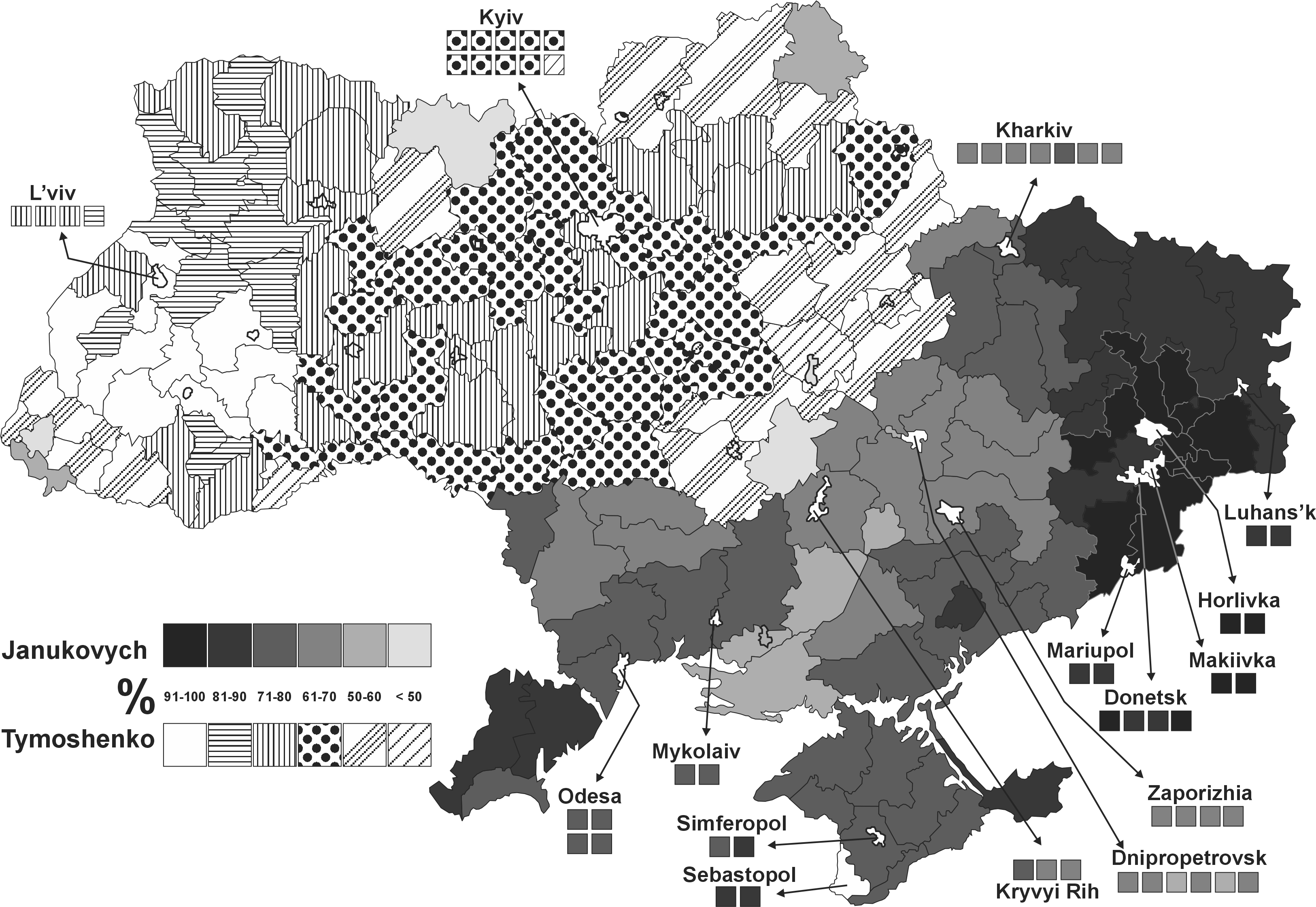Below is a copy of the Ukrainian presidential election map of 2010. This is the color version provided by the Ukrainian government.

We had to use a black-and-while version for my book The Battle for Kyiv. See: The Battle for Kyiv will be released on 30 November | Mystics & Statistics (dupuyinstitute.org). It had to be reworked by Jay Karamales.
The interesting aspect is that there are a significant number of districts (raions) in the western Ukraine where 90% or more of the population voted for Yulia Timoshenko (10 districts) and a significant number of districts in the east where more than 90% of the population voted for Victor Yanukovych (also around 10 provinces). This is serious division. There are 136 districts (raions) in Ukraine.
In the United States, there does not appear to be as near of a dichotomous split, at least at the state level (there are 50 states). In the last election, in only one state did almost 70% of the people vote for Trump. That was Wyoming where 70% voted for Trump while 27% voted for Biden. It is also the least populous state in the Union with only 578,851 people in 2020. On the other hand, nominally the most liberal state in the union is Massachusetts. There 66% voted for Biden while 32% voted for Trump. The population of Massachusetts is 6,981,974 (2022).

Now these are states, vice the much smaller Ukrainian districts, but one can see a difference. Ukrainian society was clearly more polarized in 2010 than the U.S. was in 2020. In Ukraine they ended up hosting protests for three months during the winter of 2013/2014. At its peak the protests involved over 400,000 people. This ended up throwing Victor Yanukovych out of office in early 2014 at the cost of over 100 people killed. There then developed a separatist movement in the west that was supported by Russia. Then Russian annexed Crimea and Sevastopol and then invaded Ukraine in 2014 to support the separatists. The U.S. did have a violent protest on 6 January 2021 that lasted one day that involved more than 1,200 people (as of November 2023 over 1,200 people have been charged, with over 700 of them having been convicted and as of 12 September at least 378 of them being incarcerated). Depending how you count them, 2 were killed that day or died the following day, 3 others died from other (natural?) causes, and 4 police officers committed suicide in the six months that followed.
But… probably most interesting is that there is not near as clear polarization in the U.S. in 2020 as there was in Ukraine in 2010. For example, in 34 out of the 50 states, the winner got less than 60% of the vote. In half of those states (17), it is less than 55% of the vote. In eight of those states, their vote totals were within 4% of each other. You see that in some provinces in Ukraine, but what you tend to see there is that they are voting heavily either one way or the other.

I was a bit leery of what I’d find here, as elections are tricky topics right now, but this was quite interesting. I suspect it’s mostly ethnic blocs voting differently.
Ukraine is more geographically polarized (as Joseph suggested, possibly due to the ethnic distribution pattern) whereas America is still polarized (just not as geographically polarized, except that one does note the “flyover region” which includes a lot of rural voters with some concentrations of urban voters such as represented by the small blue dot in the urban part of Nebraska). It would have been easier for Ukraine to split into two countries via some sort of civil war in 2010 than it would have been for America to make such a split in 2020. Imagine how difficult it would have been to have the American Civil War (1861-1865) if slave holders had been distributed geographically along the lines of Trump supporters (for example, a third of voters in Massachusetts being slave holders) — it would have required a Hutu-Tutsi type of conflict (see https://cla.umn.edu/sites/cla.umn.edu/files/unsorted/images/8113080_orig.jpg) within each of the states of America rather than the historical Confederate-Union type of conflict between southeastern states and the rest of America.